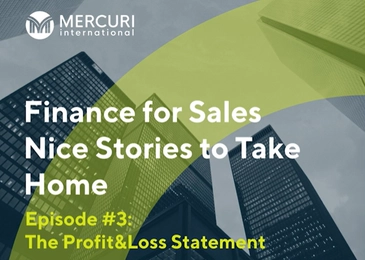Hybrid sales
Mercuri International’s new ‘Hybrid Sales Report’ takes an in depth look at how the business landscape has changed over the recent, tumultuous period, interviewing industry leaders regarding their recent experiences. It examines the pros and cons of onsite versus online – and asks, “what now?”
“Now this is not the end. It is not even the beginning of the end. But it is, perhaps, the end of the beginning.”
Ok, perhaps Churchill had slightly more on his mind than the world of sales pre and post pandemic, but the point is this – we’ve had to adapt (fast) to a business landscape that is constantly shifting, throwing up new challenges on what seems like a weekly basis.
Over 89% of companies had their sales affected by the pandemic in 2020, necessitating a rapid rethink of how we do sales effectively when conventional means (such as face-to-face meetings) are unavailable.
We’ve moved from established sales techniques, albeit those that required the gradual adoption of new technologies, to a situation where we needed to completely rethink the way in which we engaged with customers – both to retain existing sales and find innovative ways in which to gain new business.
Unfortunate events – fortunate timing
But we’ve been lucky. In a ‘half glass full’ view of the world, the pandemic coincided with the ever increasing sophistication of video-conferencing and messaging technologies, allowing us to bridge the geographical distance between supplier and customer at a time when it was most required.
But what now? While we’ve grown used to engaging with colleagues and customers online and with some offices still gathering dust, where exactly does the future of sales lie? Have we now accepted that the vast majority of our interactions are now digital, or is there still (reasonable levels of hygiene permitting) a certain irreplaceable power in a handshake?
In Mercuri International Research’s recent survey ‘The Future State of Sales’, it could be seen that one of the biggest challenges with our new online engagement model was building trust between supplier and buyer. There is still a value to the personal, albeit one that can be hard to quantify. So which approach is better? Virtual or physical?
Hybrid is the way forward
The answer – as always – is somewhere in between. And that’s exactly what Mercuri International’s recent survey and subsequent report set out to discover. What it established is that we have indeed forever changed the way we interact – we have found the productivity value in a world where we don’t have to spend hours commuting, hours traveling to meetings. But it also found that there is a real, tangible value in face-to-face contact – that digital communication may have its conveniences, but it also sacrifices a degree of trust building, and makes it that much harder to make a real, human connection.
Sales is, after all, all about trust – it’s about building a connection and a relationship between vendor and buyer. So we’re going to have to embrace new technologies – but develop our skills in using them – if we’re going to fully reap the rewards of this brave new world.
However, when we get the balance right, the rewards can be significant. Our report found that a potential ‘hybrid’ sales model could increase the number of customer visits by 53%, with commensurate productivity and revenue gains.
What now?
The salespeople who succeed are going to be those who can understand that their ‘pre-pandemic’ soft skills – their ability to engage and form relationships with their customers – are not redundant, but need to be augmented with skills that can transition to a digital world. The best sellers are going to be multi-talented, able to be as at ease in person as they are in front a screen, building real value for their customers before they ever meet them.
Sales just got a whole lot trickier, but the rewards are greater than ever. Learn more about Hybrid Selling…


